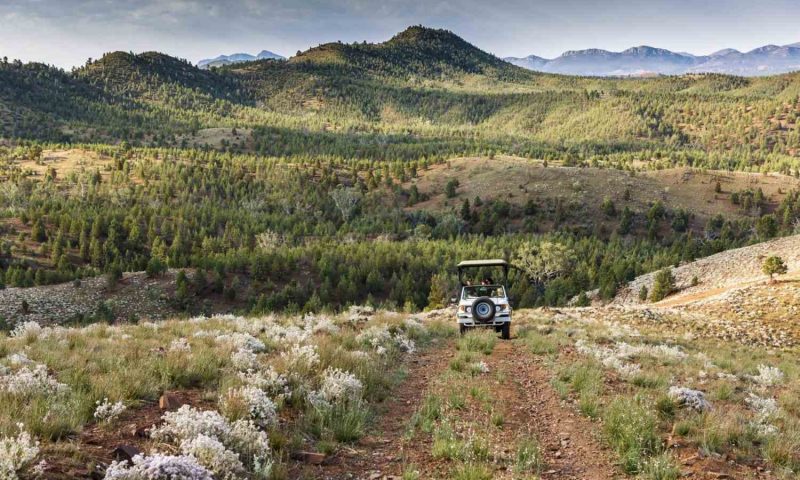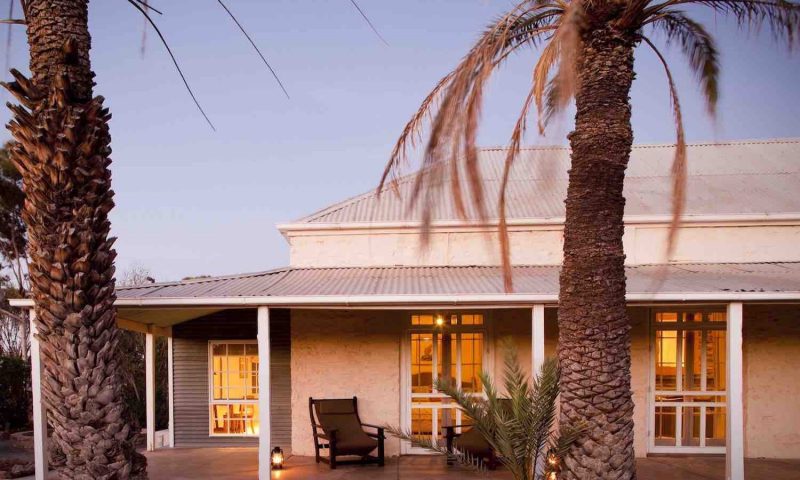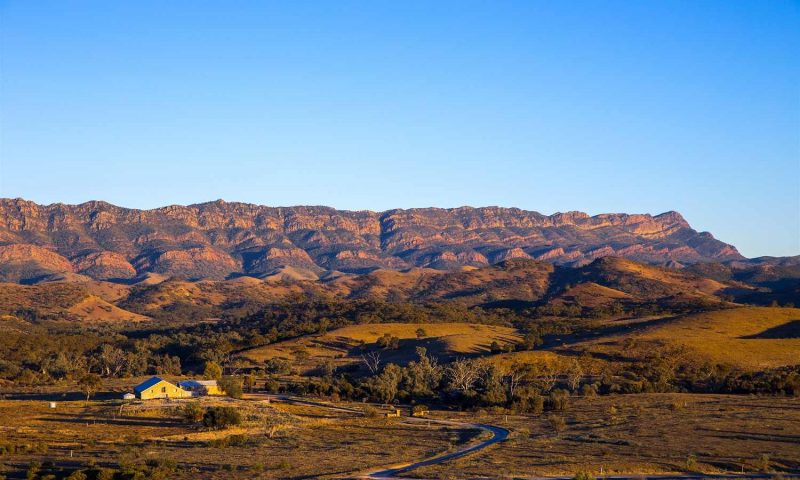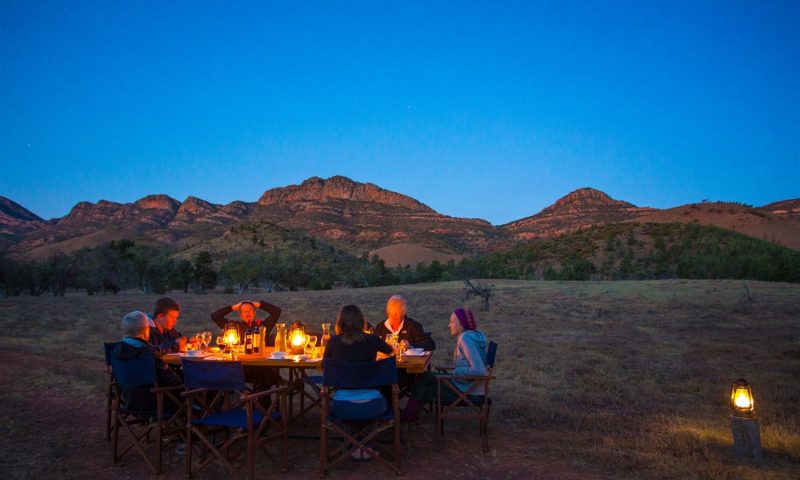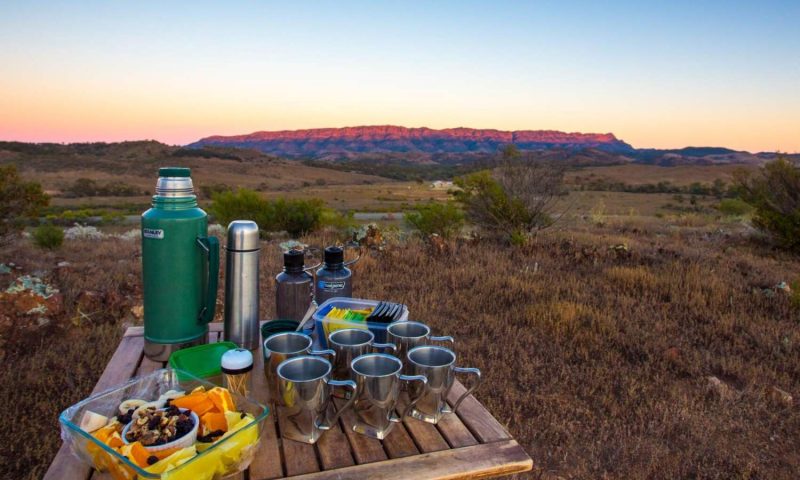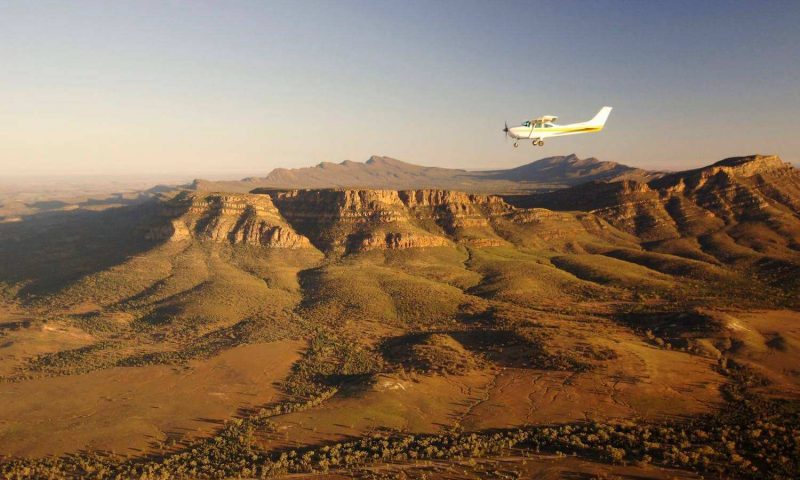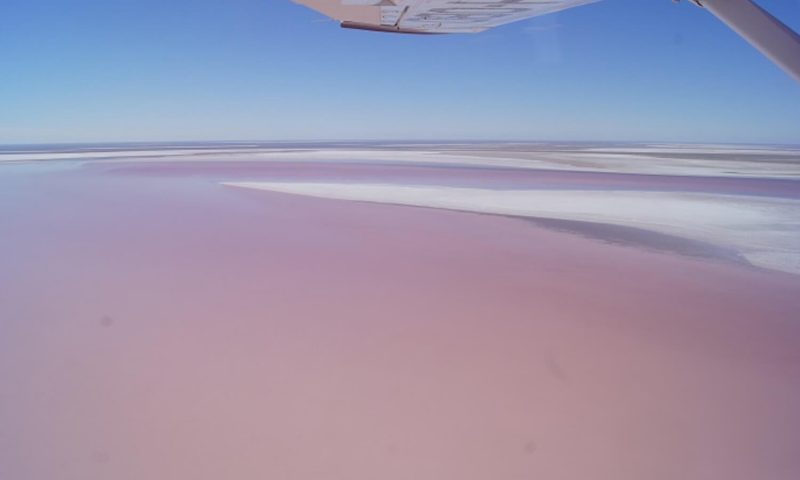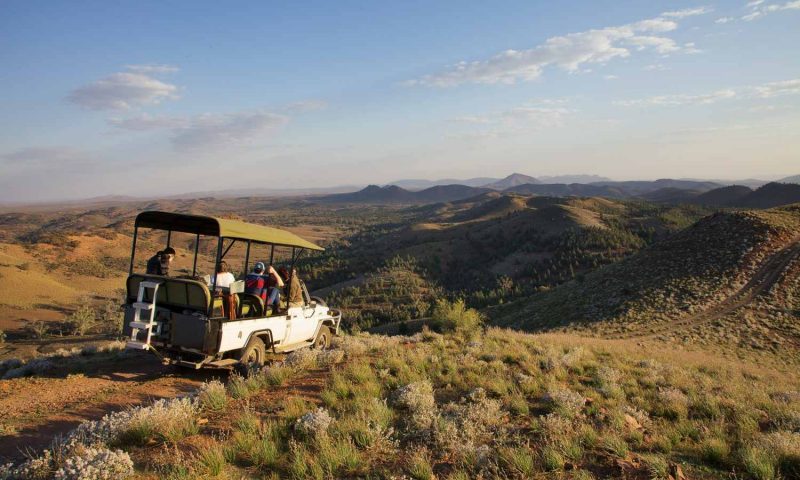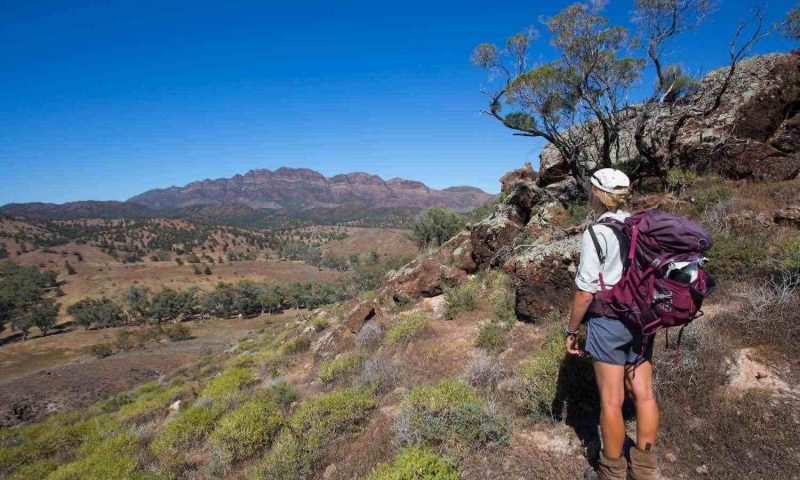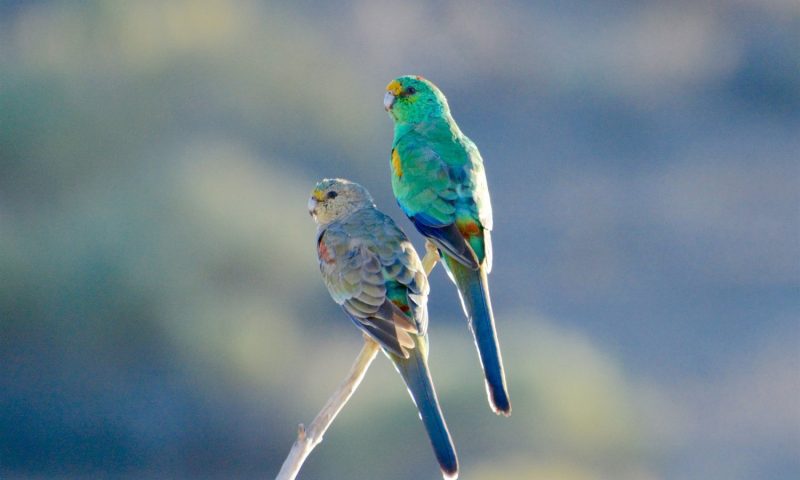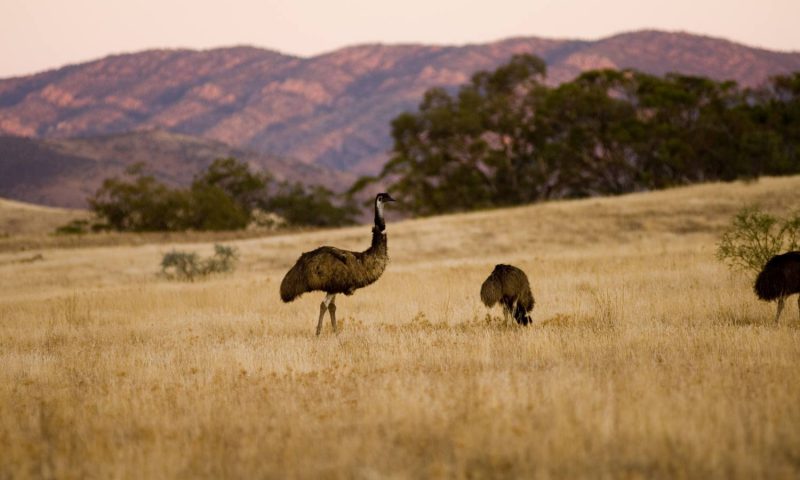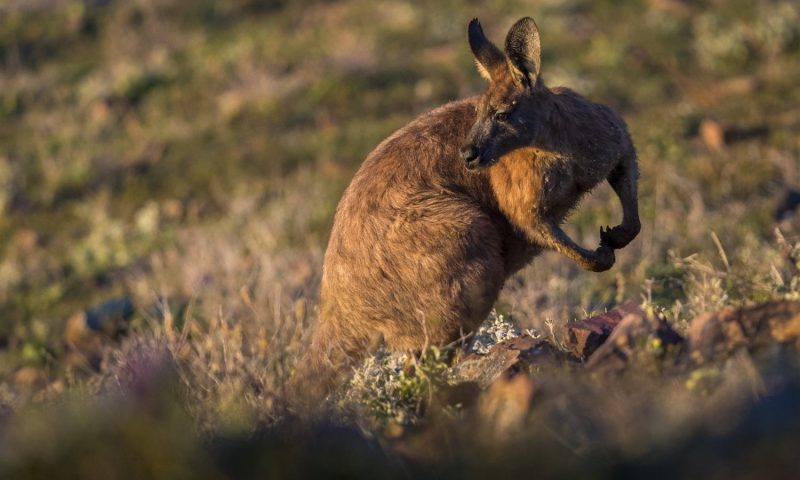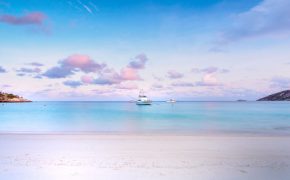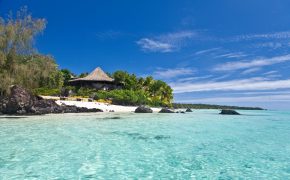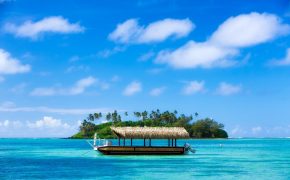We invite you to discover one of the most exclusive stays in Australia – Arkaba Conservancy, a Wild Bush Luxury property in the Flinders Ranges. Just ten guests at a time share this remote 60,000 acre private wildlife conservancy dedicated to the conservation of Australia’s unique wildlife and birds.
Mobs of kangaroos, emus and other abundant wildlife will delight you on safaris through spectacular ancient landscapes, where expert field guides will immerse you in the story of the bush. Nestled within the Flinders Ranges and framed by the walls of Wilpena Pound and the Elder Range, Arkaba offers some of Australia’s most spectacular outback scenery.
Here, surrounded by the arid wasteland of the great salt lakes, you’ll discover an ancient seabed that has been sculpted by millions of years of rain and sun into a fractured, furrowed landscape of deep valleys covered with casuarinas and cypress pines which fall into creek beds lined with river red gums.
Your stay with us is a fully hosted, fully guided experience and we aim to provoke, inspire and reconnect you to the bush. Our all-inclusive rates feature daily activities that showcase the magic of Arkaba such as bush walking, 4WD safaris, tracking native wildlife, visiting ancient Aboriginal sites or just soaking up the sights and sounds of the Australian bush.
Expect great food, exceptional wine and a supremely comfortable night’s rest. Our concept of ‘Wild Bush Luxury’ brings a touch of style to an experience of Australia’s extraordinarily diverse habitat: a ‘down to earth’ yet attentive level of service; an appreciation of the finer details; and above all a team of hosts and field guides who are passionate about Australia’s environment, its wildlife and culture.
Your accommodation is in one of only five guest-rooms at the beautifully restored 1850’s Arkaba Homestead whilst hosted dinners and sharing stories with field guides and fellow guests provide an atmosphere more akin to staying with friends in the country or a private safari lodge, than a typical luxury hotel.
In addition to providing exceptional Australian travel experiences, our mission is ultimately to conserve the environment that sustains us. This philosophy guides everything we do.
Since 2009 our focus has been to reverse the impacts of over 150 years of livestock-grazing and restore the land to its pre-European settlement bio-diversity. In just seven years our hard work has payed off with the return of native species and the regeneration of native habitat.
HISTORY OF ARKABA
In 2009 Wild Bush Luxury added Arkaba to its portfolio of luxury tourism destinations in Australia. Our goal was to provide a unique tourism experience with exclusive private access for our guests to enjoy the extraordinary diversity of our property.
As a private wildlife conservancy we have put in place successful conservation programs across the property, focussing primarily on feral species eradication and reversing the effects of years of 150 years of livestock grazing. In 2010 we removed the sheep stock from two-thirds of the property, the last of the these sheep were removed in September 2013.
THE FIRST INHABITANTS
The Flinders Ranges were originally inhabited by the Adnyamathanha (Hill People) thousands of years ago, and many still reside here today. Cave paintings, rock engravings and other artifacts indicate they have lived in the region for tens of thousands of years.
The area and its people played an integral part in the long-distance trade routes that crossed the continent. Ochre and pituri, a mildly narcotic drug, were traded along with stones used to make axes and tools, and shells which were used for decoration.
Important archaeological sites including ochre quarries (ochre is used as a paint decoration in ceremonies), rock quarries and art sites have been found among the hills and valleys of the Flinders.
EARLY EXPLORATION AND SETTLEMENT
In March 1802 the first European explorer to the region was Matthew Flinders, who spotted the ranges from the deck of his ship, Investigator, as it sailed up Spencer Gulf. From his anchorage south of present-day Port Augusta he sent an exploratory party to climb a nearby peak which is now known as Mount Brown, named after his intrepid botanist.
Edward John Eyre was the next to arrive to the region in 1839. He set out over a period of two years to explore the western edge of the range. In 1850 William Browne, J.F. Hayward, G. Marchant and an Aboriginal guide explored more country to the North.
Heavy rain stopped the party just north of Hawker so they had to return to Booborowie Station, which was settled earlier in 1843. William Chace, a stockman for the Brownes, was later sent to further explore the country.
It was then that Chace discovered the Arkaba, Wilpena and Aroona country (the Chace Range on Arkaba’s eastern boundary remains testimony to his work).
Doctor William James Browne (1815-1884) and Doctor John Harris Browne (1817-1904) claimed Arkaba and were issued with Pastoral Lease 129 in July 1851 and engaged Frederick Sinnett, a surveyor from Adelaide to survey their claims.
Although practising doctors, the Browne Brothers abandoned their medical careers soon after arriving in Australia and turned to buying property. They were the second settlers in the region after establishing Booborowie Station.
Early in 1851 they placed managing partners, the Marchant Brothers, in charge, giving each a half share in the property. The Great Drought of the 1860s broke many pastoralists, including the Marchant Brothers, who left Arkaba. The Brownes however, had the means of surviving and stayed on.
During the 1890s dingoes posed a great threat for the survival of Arkaba as it was still unfenced. As a result Arkaba changed hands a few times between the 1860s and 1900, the owners not being able to hold on to the property and it was reduced to 460 sq km (180 sq miles or 115,000 acres). Today the property is 260 sq km (100 sq miles or 64,000 acres).
1900 ONWARDS
In 1901 Otto Bartholomaeus purchased Arkaba. Bartholomaeus spent all of his money and borrowed to erect a vermin proof fence six feet high. Paddock after paddock was fenced. The cost of 14 miles of fencing in 1912-1913 was 954 pounds; labour 324 pounds; material plus freight 630 pounds. A man’s wage was 30 shillings per week.
The completion of the dingo fence allowed dingo numbers to be controlled and Arkaba became a successful venture. Otto’s son, Frank took over the station and they held it in the family until 1984 when the Rasheed family purchased the property.
When the Rasheeds moved to Arkaba in 1984 there was only one road on the property and so destructive were the rabbits that much of the country looked like a moonscape.
The first major project was a program to eradicate vermin by using bulldozers, explosives and chemicals. This project took more than 14 years and many hundreds of thousands of dollars but the result was magnificent and won them three Ibis Awards for Pastoral Management.
Bushes and trees that had not been seen for many years returned and the carrying capacity of sheep increased from 3000 to 8000. Also, approximately 10,000 feral goats were removed from Arkaba.
ARKABA HOMESTEAD & WOOLSHED
The Historic Arkaba Woolshed was built in 1856 and was used as a depot shed for the surrounding properties. The original corrugated iron roof is still on the building to this day, along with the ‘kit-form’ roof struts which were shipped over from Oregon, USA.
Back in the blade shearing days it was a 40 stand shed but now, with electric wide combs, it is a five stand shed. Still to this day you will find names etched on the stone wall of shearers gone, dating from today right back to the late 1800s.
The five-bedroom heritage homestead was built in 1856 and retains its original Flinders region settler lines. Originally, it was two cottages and later was joined together with a building between the two. Since then the ‘bones’ of the homestead have remained the same.
ACCOMMODATION
Arkaba Homestead is an oasis of comfort and style amidst a harsh and rugged landscape. In true Wild Bush Luxury style, the Arkaba Homestead pays homage to its rich pastoral and exploration heritage in a manner that is both rustically chic and utterly exclusive.
Your hosts ensure a friendly and personal level of service that is typically ‘down to earth’ but does not lose sight of the attention to the small details that are so important in delivering an outstanding outback experience.
JUST FIVE GUESTROOMS
The original layout of 1850s’ homestead has been retained, delightfully making all of the five guestrooms unique. Each has its own character and all have ensuite bathrooms and open out onto a shaded verandah with individual views of the surrounding ranges.
Four are located in the homestead, while the Coachman’s Cottage in the corner of the garden provides a fifth guestroom and is ideal for honeymooners.
ARKABA HOMESTEAD ENSUITE
The rooms are air conditioned / heated and the mix of king and twin beds have premium mattresses, organic cotton sheets and a choice of pillows to ensure a great night’s sleep.
A comfortable library with deep leather armchairs and a large stone fireplace provides seclusion for enjoying a quiet drink and a good book, while dinner is hosted on the terrace overlooking the ranges. In the heat of summer, the swimming pool overlooking the Arkaba Creek is a welcome retreat after a morning or day spent exploring the bush.
EXCEPTIONAL FOOD & WINE
Hosted dinners and sharing stories with field guides and fellow guests provide an atmosphere more akin to staying with friends in the country or at a safari lodge.
Dining around an old wool classing table on the outdoor terrace with the ever-changing light and sounds of the bush all around is a special and uniquely Australian experience. A firepit in the corner of the garden provides a great spot to retire to after dinner with a glass of wine or port to watch the stars appear over this ancient landscape.
South Australia is one of Australia’s great culinary stories: – our soil and clean air provide the key natural parameters for fresh and innovative produce.
LOCAL SOUTH AUSTRALIAN PRODUCE
Arkaba has adopted a ‘buy local’ principle and our head chef uses the very best of South Australia’s produce to craft the food program with a few native elements to add a unique intrigue and interest.
The menu may include mouth-watering dishes such as: Twice cooked Berkshire pork belly served on port wine braised radicchio, apple Perry puree and glazed muntries (native cranberries); panfried scallops served with pea puree, champagne sabayon, Yarra valley caviar and Barossa valley prosciutto; or butternut pumpkin and goats cherve tortellini served with a walnut Beurre noisette and crisp sage.
A purely South Australian wine cellar has been selected to showcase a cross-section of wine growing regions with the grape varieties for which they are best known. The bar is completely open and the chef will adapt very specifically to guest tastes and needs.
THE FLINDERS RANGES
Nestled within the Flinders Ranges in South Australia and framed by the walls of Wilpena Pound and the Elder Range, Arkaba offers some of Australia’s most spectacular outback scenery.
Here, surrounded by the arid wasteland of the great salt lakes, an ancient seabed has been sculpted by millions of years of rain and sun into a fractured, furrowed landscape of deep valleys covered with casuarinas and cypress pines which fall into creek beds lined with river red gums.
For wildlife watching, bush-walking, photography or just soaking up the sights and sounds of outback Australia, the Flinders is in a class of its own. There are a huge variety of landforms in the area, including high ranges, plateaus, gorges, valleys and creek lines as well as floodplains.
The intriguing blend of semi-arid to temperate habitats within these mountain ranges that cut into deserts of Outback South Australia has encouraged a huge diversity of wildlife and plant life, with about 1,200 species of plants and nearly 300 species of birds recorded within the ranges.
HIT THE ROAD – ADELAIDE TO ARKABA
The road to Arkaba is pretty. Very pretty. You’ll travel through the boutique wine country of the Clare Valley specialising in Riesling. The ‘Riesling Trail’ links towns, restaurants and more than 30 cellar doors over 36 kilometres.
The oldest vineyard dates back to 1848 when the Jesuit priests fled religious and political persecution in Silesia, migrated to Australia and established Sevenhill Cellars.
You’ll have the chance to admire many gorgeous outback towns with Quorn retaining much of its old world character. There’s wide streetscapes and charming heritage buildings, interesting bric-a-brac stores and art galleries.
Warren Gorge is home to a colony of Yellow-footed rock wallabies and for the energetic there is a hike to the summit of Devil’s Peak, 670m above sea level.
The town of Wilmington was named “beautiful valley” by the pioneers who settled the region in the mid 1850’s and offers views of the southern section of the Flinders Ranges to the west and Willochra Plain to the east. Red canyons and unusual rock formations can be found in the stunning Alligator Gorge.
Melrose is cradled at the base of impressive Mount Remarkable, is the oldest town in the Flinders Ranges and arguably one of the prettiest in Australia, while the pioneering town of Stone Hut began its life as a stagecoach town with Cobb & Co calling in on its way from Clare to Port Augusta. Today the town includes a collection of stone cottages mapped out on a gorgeous heritage walk.
SEASONS OF THE IKARA-FLINDERS RANGES
Whenever you experience the ancient landscape of the Ikara-Flinders Ranges and Wild Bush Luxury at Arkaba, you’re not only witnessing an environment in recovery. You’re actively participating in its revival. We adore four distinct seasons each bringing an abundance of flora and fauna at various life-cycle stages. We can’t wait to share the nuances of each with you.
DECEMBER TO FEBRUARY
In summer the days are hot, the landscape is dry and the red dirt of the outback is picturesque and dreamlike making the quintessential Aussie outback experience a reality. Be surprised by the diverse range of wildlife that remain active at this time of year.
Western Grey Kangaroos are hopping around with joeys in their pouches and if you’re lucky, you might even spot a rare yellow-footed rock wallaby. Don’t forget to look up to see the array of colourful migratory bird species like budgerigars and cockatiels that stop in the ranges and marvel at vibrant sunsets created by residual dust in the air.
December’s theatrical storms bring life and motion to the skies around Arkaba, hear the reverberating drum of the thunder and watch sudden strikes of lightening in the distance. Nature, reminding you who reigns supreme in the outback.
MARCH TO MAY
The combination of warm days and cool nights make for a fantastic time to explore the Ikara-Flinders ranges. Late rains bring much needed relief to life and land, with wildflowers beginning to bloom in response, bringing splashes of rainbow colours to the formerly sunburnt horizon.
View the wildlife becoming more active during the middle parts of the day, particularly the reptiles, such as the goanna and bearded dragon that can be seen roaming the land. Autumn is the favourite month of Arkaba lodge manager Brendon.
Due to the comfortable temperatures, the changing colours of the landscape, and the increased wildlife activity. As the end of the season approaches, the elusive echidna can be spotted venturing out of its burrow, as temperatures become more inviting.
JUNE TO AUGUST
Winter brings warm, dry and cloudless days, making spotting active wildlife an enjoyable experience. Emus and wedge-tailed Eagles are pairing off building nests to accommodate their future offspring. Male echidnas, as many as eleven, can be spotted in a line following a potential female mate closely.
The regeneration cycle continues with the once red horizon, now forming a luscious green carpet covering the land. The environment flourishing with the new hydration. As the afternoon approaches, the sky puts on a spectacular show, showcasing all the colours of an outback sunset.
Come night, as it really cools down, you will be greeted at home to a roaring campfire. Which, paired with a glass of South Australian vino, compliments the evening perfectly.
SEPTEMBER TO NOVEMBER
With warm days and cool evenings, Spring is a spectacular time to visit Arkaba. The start of the season brings rainbows back to Arkaba. Although, to see them don’t look up, look down! Wildflowers bloom once again and the horizon is patterned by hues of greens, yellows, blues, pinks, and reds of Paper Daisies, Early Nancies and Vanilla Lillies.
The abundance and timing of the wildflowers depends entirely on rainfall throughout the year. The vegetation is lush and signs of life can be seen everywhere. Spot emu chicks as they begin hatching and migratory birds begin to return.
Watch as the Wedge-tail eagle chicks hatch between August and September, though starting small, the chicks will grow to become Australia’s largest bird of prey with impressive nest structures that can weigh up to four hundred kilos!
CONSERVATION AT ARKABA
We’re proudly celebrating 10 years of conservation at Arkaba & we’re encouraged by what we’ve been able to achieve so far (changing the lives of 5,610,306 native animals and counting!). We can’t wait to get stuck into our fully endorsed conservation plan for the future. So what is the Conservation Levy?
At least 2 percent of your all-inclusive experience at Arkaba goes back into conservation projects. The Conservation Levy does not increase the price of your Wild Bush Luxury experience.
It is simply a guarantee that a minimum amount from your Wild Bush Luxury experience goes towards initiatives that contribute directly to protecting Australia’s biodiversity. Whole-hearted thanks for supporting the conservation work we love doing.
We wouldn’t exist and your wildlife experience would be vastly different without it! To experience Arkaba in a state of positive change extends your immersive experience into an enriching one. We look forward to seeing you ‘out in the field’ and showing you the real and very visible difference your stay at Arkaba makes.
OUTBACK EXPERIENCES AT ARKABA
Our expert field guides are essential in delivering an immersive wilderness experience through their interpretation and knowledge of the flora, fauna and geology of the Flinders country.
Your stay at Arkaba includes twice-daily, safari-style exploration across our 60,000 acre conservation property.
Our experiences maximise wildlife viewing potential in the varying terrains, take in some massive vistas, and encourage being out at the best times of day for beautiful light shows – early morning & late afternoon (throughout the year).
Activities are shared with other guests and curated based on interests. For serious birders and photographers we highly recommend booking private experiences (at additional cost) to ensure the full attention to your individual interests.
ARKABA THROUGH ADNYAMATHANHA EYES
A walk with Pauline McKenzie is an opportunity to connect you with stories of Adnyamathanha people, Australia’s first people who have long looked after the landscape and wildlife of South Australia’s Ikara-Flinders Ranges.
Adnyamathanha people come from tens of thousands of years as an oral culture and this has made them wonderful story tellers. Pauline is a living library of her ancient Adnyamathanha lifestyle.
Born in Hawker, she spent much of her childhood on country just north of Arkaba and, like most indigenous people of a certain age, has a connection with the land that emanates from long before any European explorers or settlers appeared.
Pauline lives locally in Hawker and is one of few people who still speaks the Adnyamathanha language fluently. She spends a large portion of her time teaching cultural stories and language (Yura Muda) at the Hawker area school and is determined that Adnyamathanha stories and her culture are passed on.
Her stories of the land and her personal story growing up as a person in ‘white’ Australia provide a glimpse into Australia’s Aboriginal history and the issues that confront Aboriginal society today.
OUTBACK AIR SAFARIS
For some of the best birds-eye views in Australia you can’t miss an outback air safari over Arkaba and surrounds. It’s one of the best ways to get a real sense of place and the scenery is spectacular.
An outback air safari provides an all encompassing view of the topology of the ranges, particularly Wilpena Pound, and is an easy way to experience the massive salt pans of Lake Torrens to the west of the ranges. Whether it’s a heli tour of Wilpena Pound or a day trip in small aircraft flight to Lake Eyre, this opportunity is not to be missed.
HELI-OUTBACK EXPERIENCE
Soar with the spirits over Wilpena Pound along the ancient ramparts of the Ikara-Flinders Ranges. Allow your sense of freedom to take over as you pass Rawnsley Bluff, down the spine of Wilpena Pound, weaving amongst the cliffs of the incredible Heysen Range, exit the ranges through Brachina Gorge and let the vastness of Lake Torrens and the outback stretch out in front of you.
Touch down at one of Australia’s iconic outback pubs, the Prairie Hotel in Parachilna, for a platter of ‘feral food’ (or something else that takes your fancy). You’re back in the helicopter for round two tracking south along the old railway and through Edeowie Gorge, around St Mary’s Peak before returning west along Arkaba’s spectacular Elder Range.
Get your last bird’s eye view of Arkaba’s folded landscape, spotting wildlife from the air before landing back on Arkaba in time to head out for a sundowner drink on top of the ranges.
ADMIRE WILDLIFE UP CLOSE FROM ARKABA’S NEW HIDE
A reliable watering point for birdlife and wildlife to retreat to and a leisurely stroll from our Arkaba Homestead through beautiful red gum trees. The hide is a complimentary experience and an ideal place for a spot of morning or afternoon tea as you listen to sounds of the Australian bush.
The last few months have delivered a hive of exciting activity including 36 different bird species, Western Grey Kangaroos, Red Kangaroos, Common Wallaroos, an Echidna, Sand Goannas, Bearded Dragons, Shingleback Skinks and the Tawny Dragon endemic to Australia.
Galahs are one of the most prominent and easily identifiable bird species in all of Australia. With their beautiful rose-colored bodies and noisy chattering, they are an unmistakable Australian icon.
Once mating season is officially underway, Galahs can be found throughout Arkaba’s 60,000 acres nesting in tree hollows lined with their plucked down feathers.
Though nationally Galahs have a high chick mortality rate (averaging 50% mortality per nest), we have seen an inspiring increase in chick survival at Arkaba as a direct benefit of feral cat management and conservation.
Arkaba is uniquely positioned on the cusp of the territory ranges of three species variations of Australian Ringneck Parrots. All three variations mate without discrimination and hybridize seamlessly, making for unique and exciting spottings for sharp-eyed bird watchers who can discern subtle plumage variations.
Ringnecks are opportunists and will feed on whatever is available – fruits, seeds and even insects. Luckily unlike Galahs, Ringnecks have impressive fledgling survival rate at around 75% per nest, and have also benefited from the feral cat management at Arkaba over the last ten years.
This Little Eagle (Hieraaetus morphnoides) might have been hunting rabbits, reptiles or even birds when field guide Charlie managed to snap this picture as it came down to land on an old fence post.
This beautiful eagle, along with the larger and more commonly known Wedge-tailed eagle make up the only two “booted” eagles in Australia, their feathered legs being one of the features that set them apart from other Australian Raptors.
New evidence suggests that Little Eagles migrate from South to North during the winter months, explaining why we tend to see them more frequently in the summer. One individual was recorded to have travelled as far as 3,000km in a season!
Nesting pairs of this very attractive eagle have been recorded across Arkaba’s private wildlife conservancy in South Australia’s Flinders Ranges over the past couple of years, with birds preferring to nest in dense, tree lined watercourses with large living trees.
Arkaba will continue to be an attractive breeding ground for the Little Eagle, as current and future conservation projects continually improve the health of river red gum communities across the conservancy.
SAFARI DRIVES
Explore the vastness of Arkaba’s 60,000 acres on a wildlife-viewing safari drive. Arkaba’s picturesque high ranges, plateaus, gorges, valleys and creek lines provide a huge variety of habitat for wildlife and on any given day a game drive will reveal Arkaba’s hidden treasures.
Afternoon guided experiences are usually capped off with a sundowner drink on top of the ranges with the scale and grandeur of outback Australia laid out for miles around.
RIDGETOP SUNDOWNERS
Arkaba’s signature experience will take you on a 2 to 4-hour loop drive traversing the hills of Arkaba with views across the region and beyond the vast property boundaries. This drive will take you through some of the beautiful rolling hill country that was historically used for sheep grazing but now keeps mobs of ‘roos and emus happy.
From scenic ridge-tops you’ll have views to the North of Wilpena Pound, east to the Chace Range, west to the Elder and Red Range and south to Yappala and Yourambulla Ranges.
On a clear day you may even spot Lake Torrens to the west – the second largest salt lake in Australia. This safari drive features plenty of great aspects for photography as the sun sets with a glass of South Australian wine in hand!
RUGERS HILL
This safari drive takes you to a high lookout point between the Elder Range and Wilpena Pound. It gives great aspects of both and is a favourite for photo shoots, sun downers or morning tea. You’ll also pass through historical sheep grazing rolling hill country where the ‘roos and emus are now extremely happy. 2 1/2 to 3 1/2hr round trip
BILLYGOAT HILL
This scenic drive takes you to an epic lookout atop the Ulowdna Range, which runs parallel to the southern rim of Wilpena Pound.
On a clear day you can see Lake Torrens to the west – the 2nd largest salt lake in Australia, as a white strip on the horizon; sometimes easily mistaken for an actual body of water. The drive to this spot traverses some of the foothills of ‘The Pound’. 3 to 4-hour trip.
GRAVE CREEK LOOP
This is a very different drive to those above in that it follows the Arkaba Creek to some of its reliable spring spots where you’ll see big River Red Gums and potentially lots of wildlife.
This area is a very spiritual area for Adnyamathanha Elders and also provides great views of the Elder Range. 1 to 2 hours but potentially a lot longer if guests wish to sit and watch waterholes to see what comes to drink.
THE SOUTHERN LOOP
This is an adventurous extension of the Grave Creek Loop and continues to the south of the property – a little traversed, remote region, and follows our southern boundary fence in one section.
Travelling through some interesting native shrubbery that due to its lack of proximity to water is seeing some great chenopod (saltbush family) recovery, amongst other varieties. A fabulous view of the southern end of the Elder and Red Ranges appears as we climb a rocky rise to a large clearing, most suitable for morning tea. 4 to 5 hours.
THE DUNDEE TRACK
This loop track takes us through astonishing habitat changes as we leave the Homestead via Arkaba Creek to rumble over the rolling grazing hills. This rocky adventure traverses up and over the Red Range, taking us to the valley between that and the Elder Range. Here the huge Red Gums are nowhere to be seen, replaced by a vast sea of Mallee and Cypress forests.
Geological changes can be mapped through the vegetation changes that are clearly seen throughout this drive. The loop back through the Red Range takes a small creek line that has cut through the Range over many years.
During the course of this drive we pass three of our vegetation transect study sites chosen for their unique diversity and potential evidence of change since grazing ceased. At least 4 1/2 hours – often 5 to 6 with a morning tea break.
WALKING SAFARIS
Get a completely different perspective of Arkaba’s magnificent wilderness on an included walking safari. Our expert field guides pull together the incredible geological history, wildlife and pastoral heritage of this region that will deepen your connection with the land. Walking safaris are individually tailored to your interests and cover some of the best bushwalking territory in Australia.
ARKABA HILL HIKE
This steep and rocky scramble to the top of the camel hump hill behind the homestead is a good sweat breaker with a very rewarding view at the top. Here we pass some fascinating native flora examples eking out an existence in what looks to be inhospitable rocky soils. Approximately 1 1/2 to 2 hours round trip.
THE ARKABA WOOLSHED
The impressive old stone shed although no longer in use, tells stories of the shearing hardships of days gone by. Built in the 1850’s and still in use up until the property destocked in 2013, the smell as you enter is unmistakeable.
The walk (or drive) to the sheering shed goes through some interesting Mallee forest that is showing signs of recovery after heavy grazing pressure, and the ‘Woolshed Creek’ that passes it has some surface water in the form of small spring fed puddles that attract bird and mammal life.
ARKABA CREEK WALK
This very pretty walk amongst the gum trees follows Arkaba creek in a southerly direction. We pass reliable water springs that attracted the first settlers to the site for the Homestead and Woolshed and today attract wildlife.
As we visit two headstones of some early settlers you’ll hear stories of their hardship, evidenced in their young years at death. This is a 1/2 hour to as-long-as-you-would-like walk. The creek meanders all the way to the south-western corner of the property and beyond.
WILDLIFE AT ARKABA
Wildlife conservation on the property is an ever changing and ever improving endeavour which has immensely enhanced the wilderness experience.
As such, Arkaba’s wildlife is now prolific with Australia’s three largest macropods (Red Kangaroo, Western Grey Kangaroo and Common Wallaroo) all regular sightings. The near threatened Yellow-footed Rock Wallaby has also returned to Arkaba’s range since the introduction of active conservation programs.
